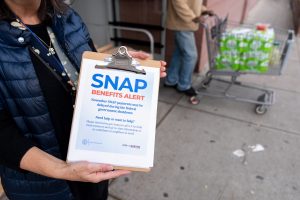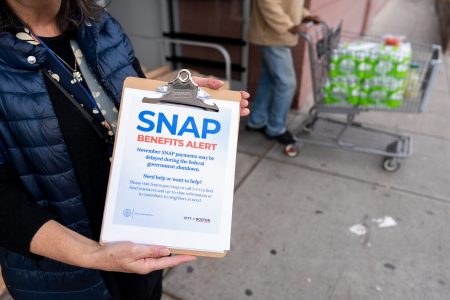As a certified student loan counselor, I’m often asked if there are any quick fixes or secret hacks to getting rid of education debt overnight. (Spoiler alert: There’s not.) There are, however, ways of “working the system” in a perfectly legal fashion.
So, when I sought to catalog legitimate loan repayment loopholes, I checked in with the country’s foremost experts. What I got back was a mixed bag of responses:
- I don’t have time for this.
- I’m not well versed in this.
- I think I better stay away from this.
- I’m not sharing things I’d reserve for my clients.
- I’m happy to share a bunch of underutilized loopholes!
These responses, in and of themselves, offer a lesson: Determining whether to use a repayment loophole — including whether it’s feasible, let alone ethical — is a personal choice. I can’t recommend a way to legally circumvent the Department of Education any more than I can try to tie your shoe from a mile away.
Bankrate’s take:
The word “loophole” has a connotation of sneakiness, sure, but nothing we cover below is illegal. That doesn’t mean some of these tactics aren’t risky, however, since they often require being on point with documentation and timing.
Still, as you’re navigating through repayment, I land on the side of the argument that knowledge is power, especially when it has the potential to help even one person.
A primer on student loan repayment loopholes
Loopholes aren’t a novel concept. The country’s top higher education debt expert, Bankrate contributor Mark Kantrowitz, has been spotting them for years.
My discovery of the early repayment status loophole allowed millions of borrowers to lock in historically low interest rates while they were still in school, ultimately saving them billions of dollars in interest over the life of their loans. (This loophole was closed by the Higher Education Reconciliation Act of 2005.)
— Mark Kantrowitz, nationally recognized student loan expert and Bankrate contributor
However, some loopholes are less realistic than others.
- You could stay in school forever: Yes, it’s possible to avoid federal student loan repayment by maintaining at least half-time enrollment and, therefore, in-school deferments.
- You explore living outside the US: Your income-driven repayment (IDR) amount is determined, in part, by your adjusted gross income (AGI). Plus, the IRS has a Foreign Earned Income Exclusion. So, you could earn up to six figures from a US employer, live in another country and get a $0 IDR payment.
Of course, you might not want to be a lifelong college student or an expat — or might not want to plan on it, only for the Education Department or the IRS to suddenly change the rules on you midstream. That’s the problem with loopholes in general — they rarely last.
As for the loopholes that are more widely feasible, they’re also more closely guarded. In an early June newsletter to subscribers, Student Loan Planner founder and CEO Travis Hornsby wrote, “… sometimes we risk a strategy being repealed if we scream it from the rooftops to the hundreds of thousands of borrowers who follow us.”
At the risk of being the guy to ruin it for everyone else, here goes.
5 Federal loan repayment loopholes to consider
1. Preserve a low IDR payment with your married-filing tax status
Who it’s for: Married borrowers who utilize federal IDR plans.
How it works: Referred to as the “reverse breadwinner loophole” by Hornsby, it requires a tax-filing status of married filing separately. As a result, it shields your spouse’s income from being included in your IDR, resulting in a lower monthly due. Also, if you live in a community property state, you might need to file IRS Form 8958 and document the situation for your federal loan servicer.
Fine print: If a married filing separately tax status increases your taxes — perhaps by making you ineligible for valuable deductions or credits — by more than you’d save with a lower IDR payment, it might not be a worthwhile loophole. Also, as with all matters involving the U.S. government, it’s wise to consult a certified tax professional.
2. Lower your IDR monthly payment by maxing out your pre-tax payroll contributions and timing your IDR recertification
Who it’s for: Federal loan borrowers enrolled in IDR who want temporarily or permanently lower monthly dues.
How it works: Since your discretionary income and your AGI impact your IDR payment, lowering these figures can decrease your monthly dues. This loophole calls for you to accomplish this via your employer: increase your payroll deductions for programs like your 401(k), Health Savings Account (HSA) and other contributions. Then your take-home pay — and IDR dues — will suddenly fall.
In advising his clients, student loan lawyer Stanely Tate has said that traveling nurses and real estate agents working on commission, among other workers with variable income, are examples of borrowers who can use this loophole to make sure their loan dues better reflect their “immediate financial reality.”
On the other hand, if your income is consistent but modest, this loophole can also drop your monthly dues. But the payment is not necessarily going to go all the way down to $0 on current IDR plans, or $10 on future federal loan repayment programs. According to Kantrowitz’s calculations, you could only qualify for a $0 monthly IDR payment if your income falls below a certain threshold.
| Age group | Under 50 | 50 to 59 | 60 to 63 |
| Maximum income to qualify for a $0 monthly IDR payment | $46,975 | $54,475 | $58,225 |
Fine print: When you recertify your income for an IDR plan, you can supply a recent pay stub instead of a tax return, also known as Hornsby’s “alternative documentation of income” loophole. So, you’d need to adjust your pre-tax payroll deductions in advance of IDR certification.
Related loopholes:
- Hornsby’s “tax extension strategy” loophole refers to requesting a tax-filing extension to delay the arrival of your return.
- Delay or defer income, such as a bonus, until after certifying your income for IDR.
- Lower your AGI by claiming the student loan interest tax deduction, unless you’re a married borrower filing taxes separately.
3. For a limited time only: Access IBR as a Parent Plus Loan borrower
Who it’s for: Federal Parent PLUS Loan holders.
How it works: This is a new version of the past “double consolidation” loophole that closed July 1, 2025. It is a newer circumvention created, likely accidentally, by the Big Beautiful Bill and helps to accomplish the same end: repay a Parent PLUS Loan on an IDR plan via the Income-Contingent Repayment (ICR) plan. Parent PLUS Loan borrowers need to enroll in ICR before July 1, 2026 in order to be moved to the more advantageous Income-Based Repayment (IBR) on July 1, 2028.
Fine print: At the risk of being repetitive, this bit is worth a second mention: If you want the lower monthly dues that IBR offers, you must enroll in ICR before July 2026. Otherwise, you’ll be stuck on your current plan and higher monthly dues for the long haul — Parent PLUS Loans aren’t eligible for the new Repayment Assistance Plan (RAP) either.
4. Consolidate to replenish deferment and forbearance allotments
Who it’s for: Federal loan borrowers who exhaust repayment pause options.
How it works: By combining some or all of your federal loans into a new Direct Consolidation Loan, you reset your access to deferment and forbearance — both types of payment pauses. Though this loophole serves a niche audience, if you have paused your loans for three years, consolidating them could give you up to another three years’ worth of postponement, if you need it.
The Big, Beautiful Bill’s impact on deferment, forbearance
The Trump Administration’s landmark legislation shrinks repayment pause options for loans borrowed after July 1, 2027. Specifically, it repeals the economic hardship and unemployment deferments and limits forbearances to nine months for every two years of repayment.
Fine print: When you consolidate with the federal government, you run the risk of resetting your progress toward certain forgiveness programs or forfeiting certain features of your current federal loans, such as subsidized interest for federal Direct Subsidized Loans. Speaking of accruals, when you opt for a deferment or forbearance, interest typically tacks onto your balance.
5. Partial PSLF for medical professionals
Who it’s for: Medical and some dental school graduates who plan to work in public service.
How it works: This loophole, detailed in 2011 by Kantrowitz, allows doctors and dentists, if applicable, to receive Public Service Loan Forgiveness (PSLF) credit during their postgraduate residencies.
Fine print: In a House version of the Big Beautiful Bill, lawmakers attempted to close this loophole. But the Senate and the final version of the legislation kept it alive, for now.
Tips for a savvy student loan repayment
Unfortunately, repaying education debt is messy, complicated and rarely works out exactly as you plan. And as my borrower clients have heard me say ad nauseam, there’s no overnight solution. Even loopholes take time to work.
Also, loopholes come and go. For example, the Big Beautiful Bill eliminated the “Pellionaires” loophole that allowed families with low income but considerable assets to qualify for the supposedly need-based Pell Grant.
So, while being crafty about working around the Federal Student Aid system can be helpful in certain situations, it shouldn’t be central to your repayment strategy. It also shouldn’t tempt you to engage in fraud, such as exaggerating your family size to qualify for a lower IDR payment.
With that in mind, consider loopholes, sure, but quickly move onto solidifying your overall repayment strategy. You might get especially aggressive about paying off your loans quickly, perhaps via student loan refinancing.
Or, if it’s a better fit, you might investigate what’s left on the menu for student loan forgiveness programs. Either way, it’s time to get moving.
Why we ask for feedback
Your feedback helps us improve our content and services. It takes less than a minute to
complete.
Your responses are anonymous and will only be used for improving our website.
Help us improve our content
Read the full article here









